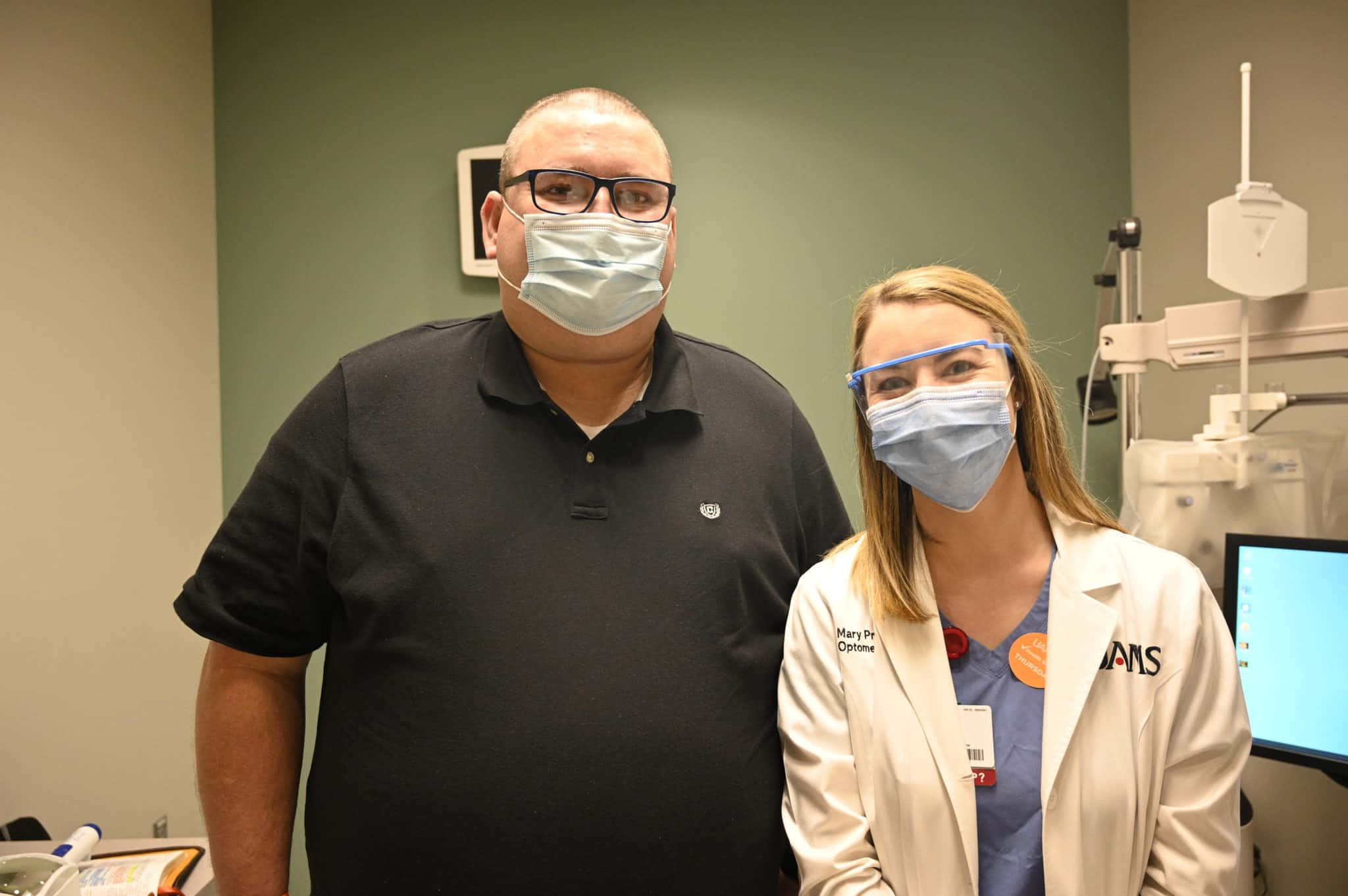Patient’s Need to Read Leads Him to Jones Eye Low Vision Clinic
| As a minister for the Highway 77 Church of Christ in Marion, Jeremy Thornton needs to be able to read from his Bible. So when damage to his optic nerve made the Word harder for him to read, he was devastated.
“When I heard that this was a permanent problem and there wasn’t really anything that could be done, I started to have these depressive thoughts,” said the 40-year-old Thornton. “It didn’t seem like there was any hope.”
That was before Thornton found the care of Mary Price, O.D., in the Low Vision Clinic at the UAMS Harvey & Bernice Jones Eye Institute, who provided solutions to give Thornton a clarity he thought was lost forever.
“When we came to the Low Vision Clinic, Dr. Price started pulling all these devices out, and it just seemed like there were all these different options,” said Thornton. “All of those feelings of despair were just gone.”
Thornton’s vision had been impacted by damage to his optic nerve sustained when there was a buildup of fluid and pressure in his brain. Migraines had sent him to the hospital multiple times in Tennessee, where he was living at the time, but it wasn’t until he was being discharged from a six-day stay that he realized his vision had suffered.
“I had to go back into the hospital and have surgery to put a shunt in my brain to drain the fluid, but in the process of all that, it affected my vision,” he said.
“Mr. Thornton has a condition called optic atrophy, which is when there is damage to the nerve that connects the eye to the brain,” explained Price. “Anything we see, any visual stimulus, the signal travels along that nerve. So patients who have damage to the optic nerve will have some form of reduced vision. And that can range drastically from mildly decreased vision to very severe vision loss.”
When doctors in Tennessee explained the damage, and noted that it would mean permanent vision loss, Thornton at first accepted that nothing could be done. However, after a move to Arkansas required him to find a new ophthalmologist, he was referred to the Jones Eye Institute.
“My eye doctor said there’s this thing called the Low Vision Clinic I’d like you to go to. I’d never heard of low vision before. I didn’t know what the clinic was about,” said Thornton.
Price explained the clinic’s work.
“In low vision, we help patients who have problems with everyday tasks such as reading a book, watching TV, seeing a scoreboard at a football game or even writing checks,” she said. “When we first bring the patient in, we discuss their specific goals with them and then create a treatment plan to achieve those goals.”
“Mr. Thornton’s goals for his vision loss were very similar to a lot of patients we see in low vision,” Price said. “He wanted to be able to see the computer better, and that’s a pretty common goal. He also wanted to be able to read better, specifically his Bible.”
In addition to fitting him for new glasses, Price offered Thornton a variety of reading aids, including a magnifier that lays on top of a book and includes an LED light to increase contrast. She also suggested a magnifier that fits over the patient’s glasses allowing them to type or read hands-free.
“As soon as he placed the illuminating magnifier down on the page he could read the exact words in the Bible. He had no trouble at all,” said Price. “It was a moving moment. He started tearing up and said he hadn’t been able to see those words or read those verses in quite a while.”
Thornton said the change was “like being able to see for the very first time.”
“We’re lucky to have computers and tablets that are able to make the font bigger, but I still wasn’t able to read my actual Bible. When I came to the low vision clinic, they told me to bring everything that I use on a daily basis, so I brought my Bible. And I was able to read it, and read it clearly, without any strain,” said Thornton.
The moment was emotional – for both patient and doctor.
“It does make me emotional, just seeing happy tears during the exam. It brings tears to my eyes too, because it’s helping their independence and their self-sufficiency,” said Price. “Mr. Thornton is young, so he has a lot of years left to work and be at home with his family, and devices like these do change patients’ everyday lives.”
And while the vision loss can’t be recovered, Thornton said it meant a lot to him to have a doctor who was determined to find a solution to help him do what’s most important to him.
“To have somebody presenting solutions, trying to help me to have a fighting chance, that was nice,” he said.


